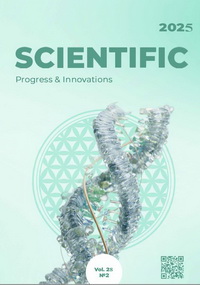The peculiarities of segetal vegetation control on hemp (Cannabis sativa L.) sown areas
DOI:
https://doi.org/10.31210/spi2025.28.02.03Keywords:
hemp, variety, weeds, herbicides, application ratesAbstract
Modern data prove the necessity of thorough control of segetal vegetation on hemp sown areas. There are also apprehensions that the application of herbicides may have the after-effect on the next crop in the rotation or even on hemp. The materials for the research were Hliana, Hlesia, and Sofia varieties of Ukrainian selection. The rates of herbicides’ application were studied: of Gesagard (prometryn, 500 g/l), Stomp (pendimethalin, 330 g/l), Zenkor (metribuzin, 600 g/l). The conducted researches showed that white goosefoot (Chenopodium album) is the dominat-ing species of segetal vegetation on hemp sown areas, and the amount of white goosefoot reached several hundred on control variants, where herbicides’ protection was not used. The application of Gesagard at a rate of 1.5 l/ha reduced the number of segetal vegetation by 39 %, of Stomp and Zenkor – by 48 and 63 %, respectively. The further increase of herbicides’ rates caused further reduction of weeds’ amount by 73, 78, and 81 %, respectively. The maximal application rates enabled to diminish the number of weeds by 81–91 %. However, the inhibiting action of herbicides on hemp plants was observed. This effect was observed somehow differently depending on the conditions of the cultivation year, but it was statistically significant. The application of even minimal rates led to the decrease of plant height, which is known to be an important economically valuable indicator of hemp. On the average, during the two years of studies, the plant height of this crop diminished by 16 cm under Gesagard effect, and under the effect of Stomp and Zenkor – by 36 %, which corresponds to the results obtained by other researchers. The study results prove that despite the developed habitus, hemps need the development of protection system against weeds, the main component of which is white goosefoot. It is also necessary to pay attention to the choice of herbicides, as they may have phyto-toxicity for the crop. In particular, it was found that metribuzin and pendimethalin can cause burns and growth retardation of hemp plants. Moreover, the negative impact on the plants grew together with the increase of the herbicide’s application rate.
Downloads
Published
How to Cite
Issue
Section
License
Copyright (c) 2025 Scientific Progress & Innovations

This work is licensed under a Creative Commons Attribution 4.0 International License.

 Creative Commons Attribution 4.0 International Licens
Creative Commons Attribution 4.0 International Licens